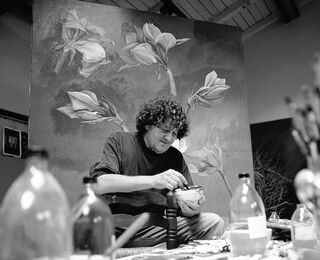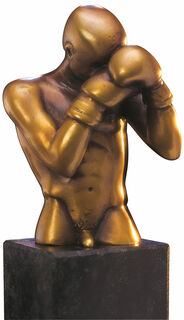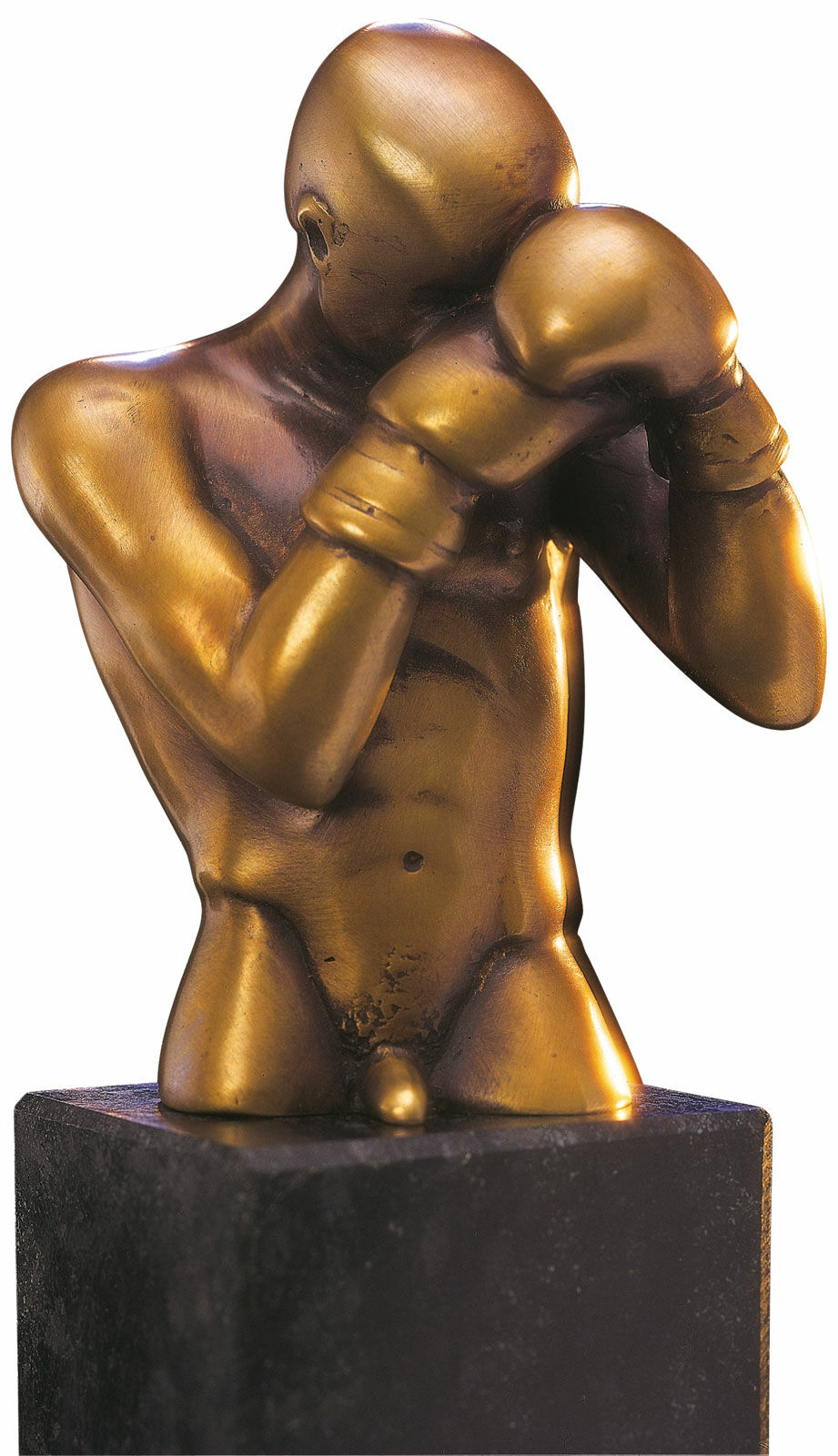Sculpture "The Boxer" (1996), bronze on stone pedestal
Sculpture "The Boxer" (1996), bronze on stone pedestal
Quick info
limited, 480 copies | numbered | signed | bronze + stone | patinated | height 19 cm | weight 1.8 kg
Detailed description
Sculpture "The Boxer" (1996), bronze on stone pedestal
Bruno Bruni is a big fan of boxing. With this sculpture, he created a tribute to the dynamism, strength and concentration of the athletes.
Fine bronze, patinated, on a pedestal of diabase. Cast by hand using the Lost-Wax-Process. Limited edition of 480 copies, numbered and signed. Height with pedestal 19 cm. Weight 1.8 kg.
Customer reviews

About Bruno Bruni
Born in 1935, Italian painter, graphic artist, and sculptor
"Art must be for everyone."
Truly a life devoted to art: Bruno Bruni, an internationally celebrated and successful painter, graphic artist, and sculptor, has been working as a freelance artist for more than six decades, creating a broad and extensive oeuvre that inspires collectors and art lovers worldwide.
Without being committed to any particular school, he developed an individual style early on, based on figurative elements, such as those reminiscent of the Renaissance and Mannerism but also revealing other influences, such as those of Surrealism. Bruni's depictions often radiate a beguiling beauty and grace, which he skilfully contrasts with elements like missing faces. His choice of motifs is also impressive, with its very diverse subjects. On one hand, there are his classics, which he repeatedly varies and combines, such as sensual female nudes, the trench coat, or the amaryllis. On the other hand, he also creates thoughtful moments with motifs such as the Warsaw Ghetto, Sophie Scholl, Anne Frank, Rosa Luxemburg, or Che Guevara.
Colour lithography, in particular, allows Bruni a high degree of spontaneity and freedom during the process of creation. His slender female nudes, still lifes and delicate floral motifs take on an erotic charm through their graphic expression. His flower still lifes are reminiscent of Albrecht Dürer's graphic studies of nature. However, Bruni is not just concerned with the detailed reproduction of the motif but with the sensual radiance of the floral objects. Typically for his drawings, the dominant element is the line, which seems to be in constant flow and balance. The motif is defined by the beautifully curved serpentine line. The little-structured internal form invites the viewer to intensively follow the contour.
Bruno Bruni was born in 1935 in Gradara, Italy, and grew up in poor living conditions. Already as a child, Bruni started painting and in 1953, he began studying at the Istituto d'Arte di Pesaro. In 1960, he transferred to the Hochschule für Bildende Künste in Hamburg, where he was accepted without any entrance examination and studied under the painter and graphic artist Georg Gresko, later under Paul Wunderlich. In 1965, Bruni left the university – without graduating. But he was already able to sell his first paintings and received a scholarship from the Lichtwark Prize of the City of Hamburg in 1967. In 1968, in protest against the mechanisms of the art market, he co-founded the cooperative "CO-OP" with other artists, and a little later, he achieved the breakthrough he deserved. Yet despite all his success, Bruni was then as he is now, an authentic artist who neither allows himself to be taken over by the art business nor follows trends. He has also never identified with the elitist pretensions of the art scene. "Art has to be for everyone," he says, and not just for rich people.
Since he began exhibiting, Bruni has presented his works in numerous art houses, including London, Rome, Munich, Milan, Amsterdam, Tokyo, New York, Zurich, and St. Petersburg. In 1977, he was awarded the renowned "International Senefeld Award" for his lithographs, and in 2003, he received a very special honour for his services to contemporary art - the title "Official Knight of the Republic of Italy". In 2014, Bruni received an honorary doctorate from the Russian-Armenian University in Yerevan.
An alloy of copper with other metals (especially with tin) used since ancient times.
When casting bronze, the artist usually applies the lost-wax technique which is dating back more than 5000 years. It's the best, but also the most complex method of producing sculptures.
First, the artist forms a model of his sculpture. It is embedded in a liquid silicone rubber mass. Once the material has solidified, the model is cut out. The liquid wax is poured into the negative mould. After cooling down, the wax cast is removed from the mould, provided with sprues and dipped into ceramic mass. The ceramic mass is hardened in a kiln, whereby the wax flows out (lost mould).
Now we finally have the negative form, into which the 1400° C hot molten bronze is poured. After the bronze had cooled down, the ceramic shell is broken off and the sculpture is revealed.
Now the sprues are removed, the surfaces are polished, patinated and numbered by the artist himself or, to his specifications, by a specialist. Thus, each casting becomes an original work.
For lower-quality bronze castings, the sand casting method is often used which, however, does not achieve the results of a more complex lost-wax technique in terms of surface characteristics and quality.
Sculptural representation of person's head and shoulders.
Term for an art object (sculpture, installation), which is produced in multiple copies in a limited and numbered edition according to the artist‘s will.
Artist's multiples have been called the most accessible and affordable art on the market.
A plastic work of sculptural art made of wood, stone, ivory, bronze or other metals.
While sculptures from wood, ivory or stone are made directly from the block of material, in bronze casting a working model is prepared at first. Usually, it is made of clay or other easily mouldable materials.
The prime time of sculpture after the Greek and Roman antiquity was the Renaissance. Impressionism gave a new impulse to the sculptural arts. Contemporary artists such as Jorg Immendorf, Andora, and Markus Lupertz also enriched sculptures with outstanding works.


